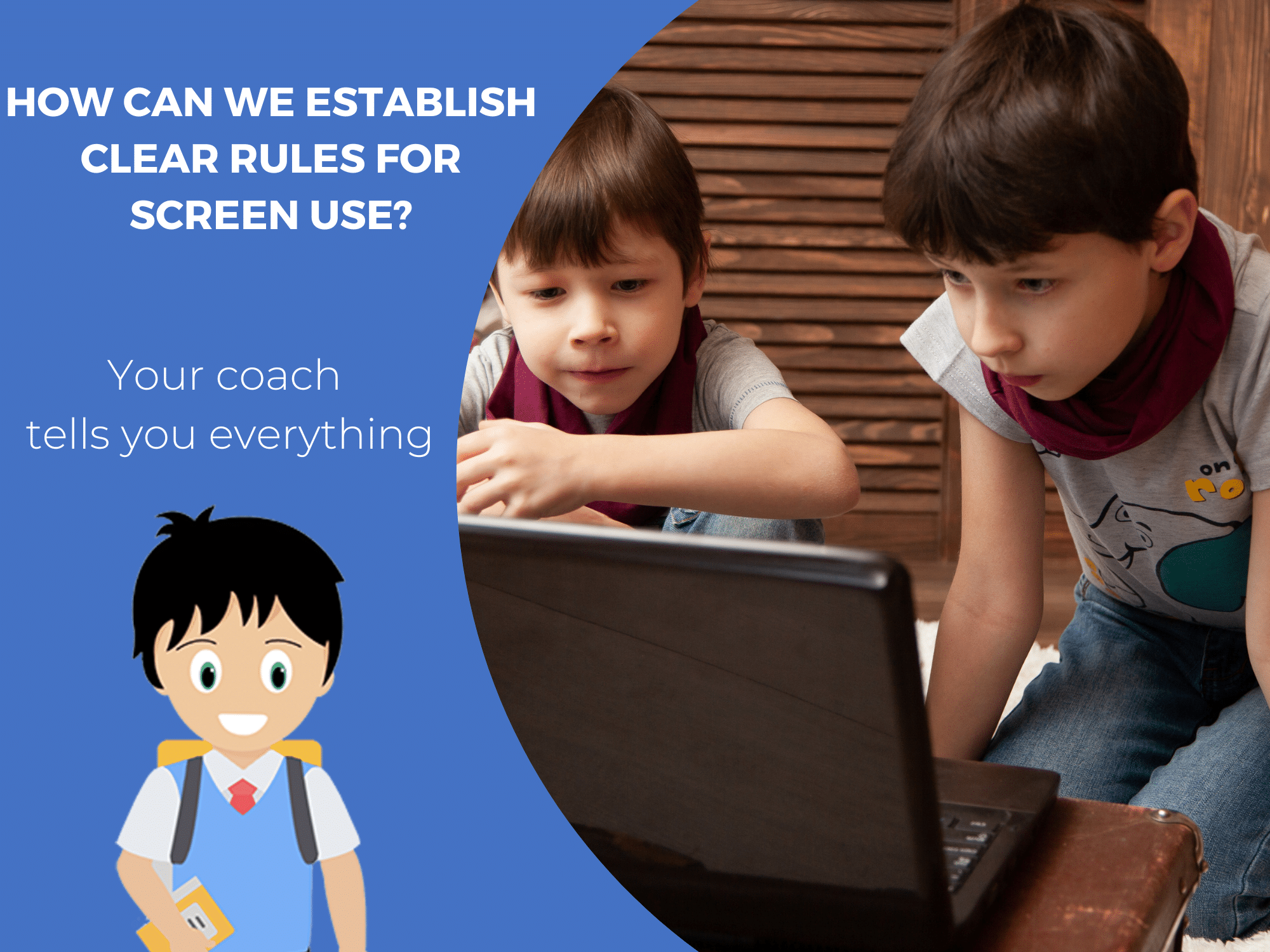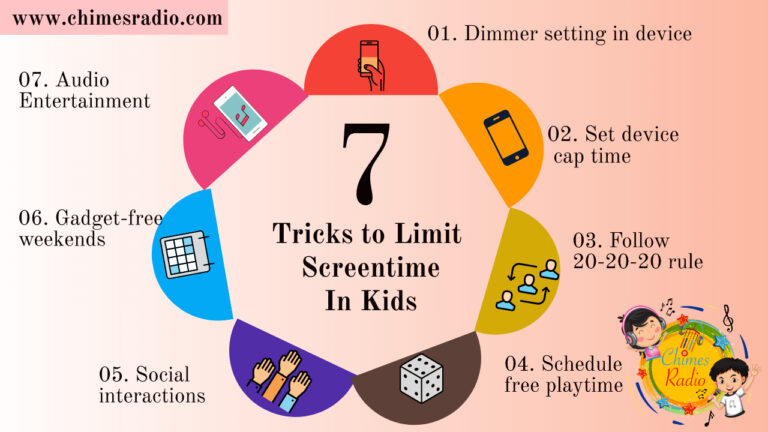Tips for Managing Screen Time for Kids
In today’s digital world, managing screen time for kids has become a challenge for many parents. With smartphones, tablets, and laptops everywhere, it’s crucial to find a balance between screen-based activities and offline experiences. This blog post offers valuable tips for managing screen time for kids, ensuring they stay healthy, engaged, and well-rounded. Let’s explore how parents can take a proactive approach to managing screen time while fostering positive habits.
Why Managing Screen Time is Important for Kids
 Managing screen time is crucial because excessive screen usage can lead to various issues such as eye strain, sleep problems, and reduced physical activity. It can also affect children’s ability to focus, socialize, and engage in creative play. By limiting screen time, parents can help kids develop healthier habits, improve their attention spans, and foster a love for offline activities, promoting overall well-being.
Managing screen time is crucial because excessive screen usage can lead to various issues such as eye strain, sleep problems, and reduced physical activity. It can also affect children’s ability to focus, socialize, and engage in creative play. By limiting screen time, parents can help kids develop healthier habits, improve their attention spans, and foster a love for offline activities, promoting overall well-being.
Recommended Screen Time Guidelines for Different Age Groups
 Understanding age-appropriate screen time limits is key. The American Academy of Pediatrics (AAP) provides clear recommendations:
Understanding age-appropriate screen time limits is key. The American Academy of Pediatrics (AAP) provides clear recommendations:
- For infants under 18 months, screen time should be avoided except for video chatting.
- For children aged 2 to 5 years, limit screen use to one hour per day of high-quality programming.
- For children aged 6 and older, parents should establish consistent limits and ensure screen time doesn’t interfere with sleep, physical activity, or other important aspects of health. By following these guidelines, parents can provide structure and balance in managing screen time for kids.
How to Set Clear Screen Time Rules in Your Household
 Consistency is key when setting screen time rules. Establish clear boundaries, such as no screens during meals or before bedtime. Communicate these rules openly with your children, explaining why it’s important to limit their screen time. Create a schedule that incorporates time for homework, outdoor play, and other offline activities. With well-defined rules, managing screen time for kids becomes more manageable for both parents and children.
Consistency is key when setting screen time rules. Establish clear boundaries, such as no screens during meals or before bedtime. Communicate these rules openly with your children, explaining why it’s important to limit their screen time. Create a schedule that incorporates time for homework, outdoor play, and other offline activities. With well-defined rules, managing screen time for kids becomes more manageable for both parents and children.
Encouraging Active Play and Offline Activities
 One of the best ways to manage screen time for kids is by encouraging active play and offline activities. Physical activity, creative play, and hobbies help children develop skills that screens can’t provide. Engage your kids in sports, arts, puzzles, or outdoor adventures. By promoting a balance between screen-based entertainment and physical or creative activities, children will learn to appreciate both digital and non-digital experiences.
One of the best ways to manage screen time for kids is by encouraging active play and offline activities. Physical activity, creative play, and hobbies help children develop skills that screens can’t provide. Engage your kids in sports, arts, puzzles, or outdoor adventures. By promoting a balance between screen-based entertainment and physical or creative activities, children will learn to appreciate both digital and non-digital experiences.
Creating a Screen-Free Zone in Your Home
 Designating certain areas of your home as screen-free zones is an effective strategy for managing screen time for kids. Areas such as the dining room or bedrooms can be reserved for family interactions and relaxation, free from digital distractions. Screen-free zones help children learn boundaries and encourage more meaningful conversations and connections with family members.
Designating certain areas of your home as screen-free zones is an effective strategy for managing screen time for kids. Areas such as the dining room or bedrooms can be reserved for family interactions and relaxation, free from digital distractions. Screen-free zones help children learn boundaries and encourage more meaningful conversations and connections with family members.
Using Educational Screen Time Effectively
 Not all screen time is bad! Educational screen time can be a valuable tool for learning. Programs that teach math, science, reading, or other subjects can turn screen time into productive time. Parents can manage screen time for kids by selecting age-appropriate educational apps or programs that foster learning and curiosity. Just ensure that educational content doesn’t overshadow important offline learning experiences.
Not all screen time is bad! Educational screen time can be a valuable tool for learning. Programs that teach math, science, reading, or other subjects can turn screen time into productive time. Parents can manage screen time for kids by selecting age-appropriate educational apps or programs that foster learning and curiosity. Just ensure that educational content doesn’t overshadow important offline learning experiences.
The Importance of Leading by Example
 Children often model their behavior after their parents. If you’re constantly on your phone or watching TV, your kids will likely do the same. Managing screen time for kids becomes much easier when parents set a good example. Show your kids how to engage in offline activities like reading, exercising, or spending time with loved ones. When children see you balancing screen time with other activities, they’re more likely to follow suit.
Children often model their behavior after their parents. If you’re constantly on your phone or watching TV, your kids will likely do the same. Managing screen time for kids becomes much easier when parents set a good example. Show your kids how to engage in offline activities like reading, exercising, or spending time with loved ones. When children see you balancing screen time with other activities, they’re more likely to follow suit.
How to Monitor and Limit Screen Usage with Technology
 There are many tools and apps available to help manage screen time for kids. Parental controls on devices can limit the time spent on apps or websites, set daily screen time limits, and block inappropriate content. Use built-in settings on phones, tablets, or smart TVs to monitor your child’s screen usage and ensure they’re not spending too much time in front of a screen.
There are many tools and apps available to help manage screen time for kids. Parental controls on devices can limit the time spent on apps or websites, set daily screen time limits, and block inappropriate content. Use built-in settings on phones, tablets, or smart TVs to monitor your child’s screen usage and ensure they’re not spending too much time in front of a screen.
Balancing Online Learning with Leisure Screen Time
 With the rise of online learning, it’s important to differentiate between educational and leisure screen time. Managing screen time for kids means balancing the time they spend on schoolwork with entertainment. Encourage regular breaks during online classes and limit recreational screen time after school hours. This ensures they have time for physical activities, family interactions, and relaxation.
With the rise of online learning, it’s important to differentiate between educational and leisure screen time. Managing screen time for kids means balancing the time they spend on schoolwork with entertainment. Encourage regular breaks during online classes and limit recreational screen time after school hours. This ensures they have time for physical activities, family interactions, and relaxation.
Handling Screen Time in Social Settings: Sleepovers and Playdates
 When your children are with friends, managing screen time can be a bit trickier. Whether it’s a sleepover or a playdate, screen time may become a major source of entertainment. Establish clear expectations beforehand about how much screen time is allowed and encourage group activities like board games, outdoor play, or arts and crafts. Managing screen time for kids in these social settings ensures they engage in more meaningful interactions with their peers.
When your children are with friends, managing screen time can be a bit trickier. Whether it’s a sleepover or a playdate, screen time may become a major source of entertainment. Establish clear expectations beforehand about how much screen time is allowed and encourage group activities like board games, outdoor play, or arts and crafts. Managing screen time for kids in these social settings ensures they engage in more meaningful interactions with their peers.
Addressing Screen Time as a Reward or Consequence
 Many parents use screen time as a reward or consequence, but it’s important to be careful with this approach. Over-reliance on screens as a reward can make it seem like an ultimate prize. Instead, balance rewards and consequences with other activities, such as earning time for outdoor play or family games. Managing screen time for kids should be part of a broader strategy to foster positive behavior without making screens the focal point of discipline.
Many parents use screen time as a reward or consequence, but it’s important to be careful with this approach. Over-reliance on screens as a reward can make it seem like an ultimate prize. Instead, balance rewards and consequences with other activities, such as earning time for outdoor play or family games. Managing screen time for kids should be part of a broader strategy to foster positive behavior without making screens the focal point of discipline.
The Role of Communication in Setting Screen Time Expectations
 Open communication is critical when managing screen time for kids. Talk to your children about why screen time limits are necessary and how it affects their health and well-being. Encourage them to share their feelings about screen time limits and find compromises where necessary. This helps build trust and understanding, making it easier to enforce screen time rules.
Open communication is critical when managing screen time for kids. Talk to your children about why screen time limits are necessary and how it affects their health and well-being. Encourage them to share their feelings about screen time limits and find compromises where necessary. This helps build trust and understanding, making it easier to enforce screen time rules.
Common Mistakes Parents Make When Managing Screen Time
 Managing screen time for kids can be challenging, and it’s easy to make mistakes along the way. Some common pitfalls include inconsistent rules, using screens as a babysitter, or not supervising the content children are consuming. Avoid these mistakes by staying consistent, setting clear expectations, and regularly monitoring what your children are watching or playing.
Managing screen time for kids can be challenging, and it’s easy to make mistakes along the way. Some common pitfalls include inconsistent rules, using screens as a babysitter, or not supervising the content children are consuming. Avoid these mistakes by staying consistent, setting clear expectations, and regularly monitoring what your children are watching or playing.
By following these tips for managing screen time for kids, parents can create a healthy balance between digital engagement and offline activities. It’s about setting clear boundaries, promoting positive habits, and being a role model for your children’s screen habits.


